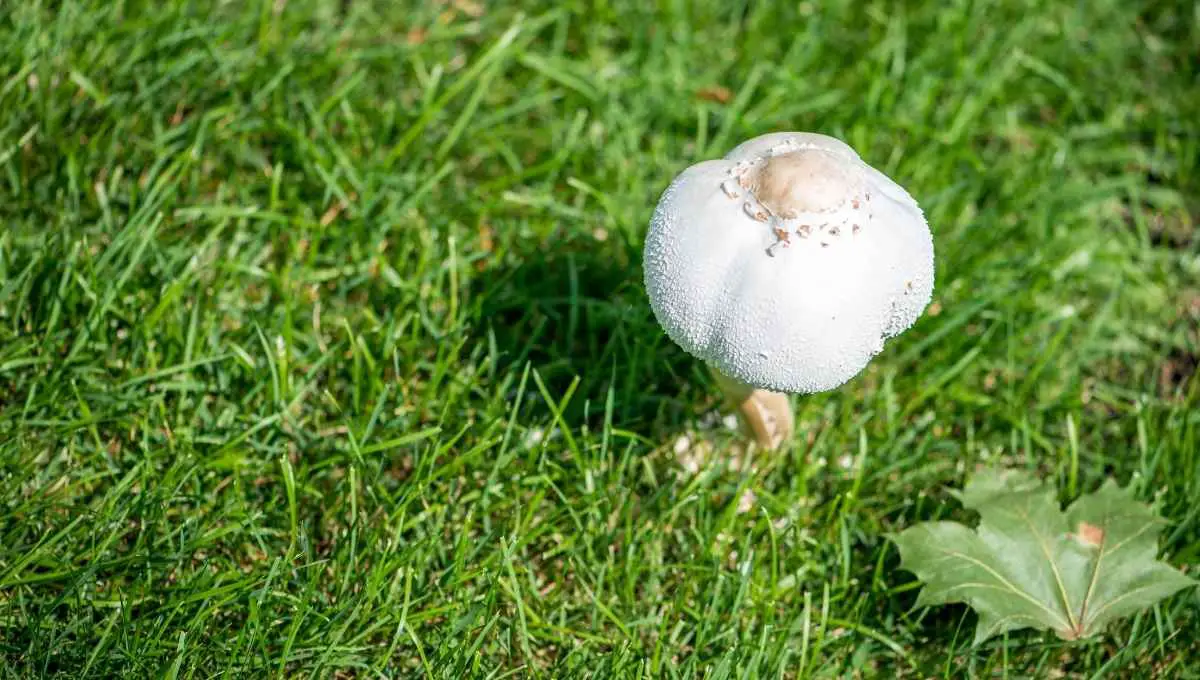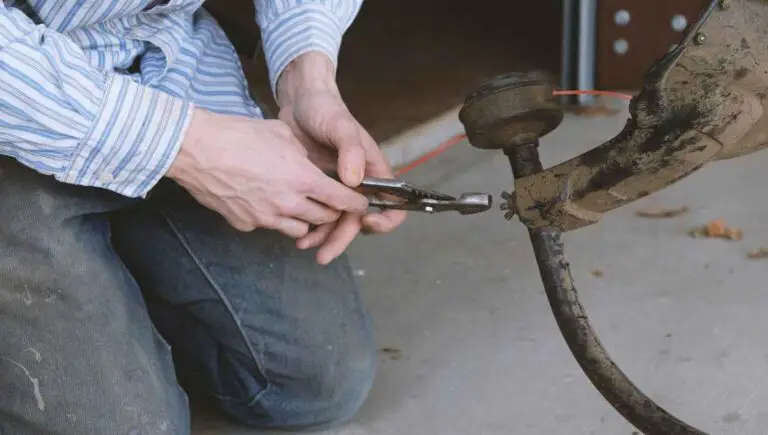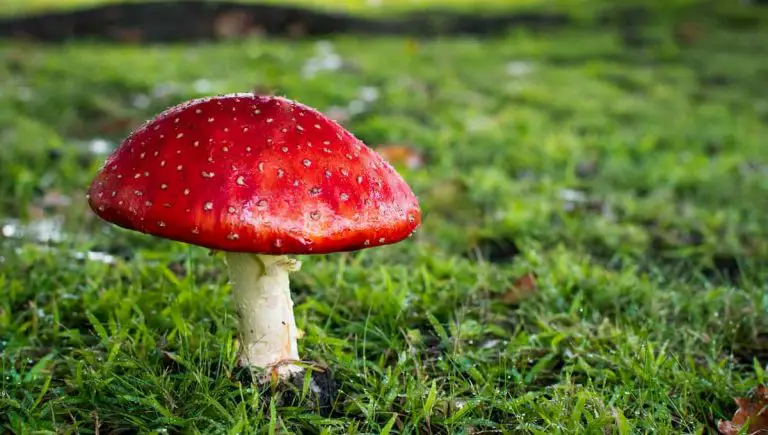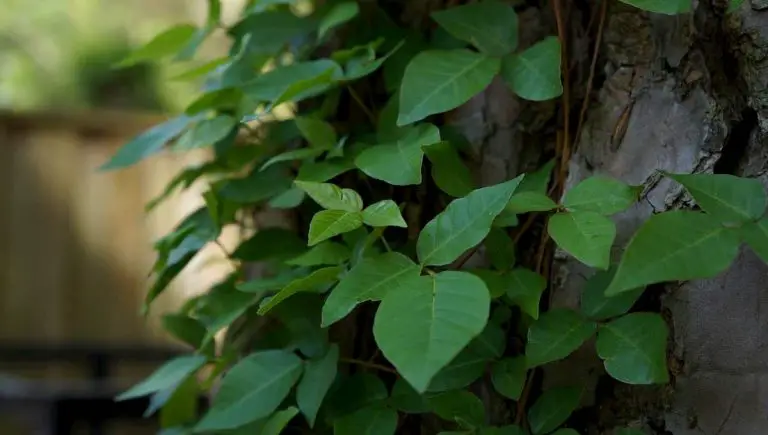Can I Eat Mushrooms Growing in My Yard? (Read This First!)

Mushrooms pop up everywhere, especially in areas that are constantly wet and are rich in organic matter. That being said, it’s not unusual to find them growing in your yard or garden. If you’re a big fan of mushrooms, you might be wondering if you can eat the mushrooms growing in your yard.
You should not eat wild mushrooms that are growing in your yard. While they may look harmless, these mushrooms may be poisonous and result in sickness or death when consumed. If you’re not able to identify mushroom specifies, always assume they are poisonous and do not eat them.
There are thousands and thousands of mushroom species in the world. Some of them are edible while others are poisonous. This article will serve as a helpful guide on the edibility of mushrooms, and whether or not the ones you see in your yard can be safely consumed.
This post contains affiliate links from Amazon and other stores. This means Yard Blogger may earn a commission if you make a purchase using any of our links. Please refer to our full affiliate disclosure policy for full details.
Here’s a Quick Pro Tip!
While you may be tempted to taste the wild mushrooms growing in your backyard, it’s better to be safe than sorry.
Instead, you can grow your own mushrooms in your yard using an Organic Mushroom Grow Kit like this one on Amazon.
Not only has it received rave reviews online, but they are fast-growing and much safer than eating wild mushrooms.
- Can I Eat the Mushrooms Growing on My Lawn?
- Poisonous Yard Mushrooms
- How Can You Tell if a Mushroom Is Safe To Eat?
- What Mushrooms Are Safe To Eat?
- What Happens If You Eat a Poisonous Mushroom?
- How to Identify Mushrooms in the Yard
- Can I Eat the Mushrooms Growing in My Garden?
- Edible Mushroom Species
- Final Thoughts
Can I Eat the Mushrooms Growing on My Lawn?

In general, mushrooms you find on your lawn are not harmful to humans. Unless you or an expert has accurately verified its edibility, these mushrooms are best left alone. Whether or not you’ll take them out will depend on your preference.
Some people might enjoy looking at mushrooms popping up in the garden. Others see them as a nuisance. If you, however, have kids and pets, it’s best to take out the mushrooms to prevent accidental ingestion.
While it’s almost rare to have poisonous mushrooms grow in your lawn, this doesn’t mean it doesn’t happen. For this reason, we should always take caution by leaving the mushrooms alone or removing them.
If you want a supply of fresh mushrooms, you might want to consider growing them as an alternative. There are many mushroom kits available, which are fun to grow. Check out this organic oyster mushroom growing kit from Back to the Roots.
Mushrooms Growing on the Lawn
Mushrooms on your lawn only mean you have healthy soil. A few of them popping up here and it is not bad for your lawn or garden.
But if you think they’re unsightly or they might be a risk to kids and pets, it’s best to remove them.
Poisonous Yard Mushrooms
If you keep a garden on your property, chances are you’ll be seeing mushrooms pop here and there. And if you see some in your yard, it’s tempting to pick them and make them ingredients for your soup or stew.
But hold that thought. You have to be 100% certain that the mushrooms growing in your yard are edible.
Know that many toxic mushrooms can grow alongside edible ones. If you’re a backyard forager, you have to keep that in mind. Always be sure that mushrooms you find in your lawn or yard are edible before picking them.
Are the Mushrooms That Grow in My Yard Poisonous to Eat?
Whether or not the mushrooms in your yard are poisonous or not depends on the kind of mushroom you have. This means you still need to know how to identify mushroom species before deciding if they’re toxic or not.
Lawn mushrooms are generally accepted as harmless, but it’s best to keep in mind to treat all wild mushrooms as poisonous – unless you are 100% certain you know about the species.
Anyone who’s an expert in mushroom identification should be the only one who can verify a mushroom’s edibility. Otherwise, leave the mushroom alone.
Are Yard Mushrooms Poisonous to Touch?
Mushrooms are not poisonous to touch. In fact, this is a common misconception. If you’re not interested in picking mushrooms for consumption, then you most likely want to get rid of them. So, you take out your hand shovel and start to dig out the fungi and touch them with your bare hands.
If you’re worried about this, don’t be. Mushrooms, even the toxic ones, are not dangerous to the touch as the toxin is not absorbed through the skin. You will only experience mushroom poisoning by ingesting them.
Are White Mushrooms That Grow in Your Yard Poisonous?
White mushrooms are quite commonly found in your yard but it’s hard to tell whether they’re poisonous or not. Mushrooms come in a variety of colors, shapes, and sizes, with white being one of the common colors.
You should not guess whether a mushroom is poisonous or not just by judging its color. White mushrooms can be puffballs, which are popular edible mushrooms. Likewise, it could also be a meadow mushroom, which tastes like a button mushroom.
Meanwhile, white is also the color of deadly mushroom species belonging to the Amanita family, such as the Destroying Angel (Amanita verna). On many occasions, these dangerous species have been collected by mistake just because they closely resemble their edible counterparts.
For this very reason, you shouldn’t treat white mushrooms in your yard as simply harmless, edible species. It is still smart to err on the side of caution.
Are Backyard Mushrooms Poisonous?
It’s good to note that there are more edible mushrooms than there are poisonous ones. So, backyard mushrooms are most likely not poisonous. However, as mentioned above, it’s so hard to tell the difference because of the diversity of mushroom species.
The best way to deal with this is to avoid mushrooms on your lawn. As an adult, you would know better than to pick them out and use them for your stew. When it comes to the mushrooms in your backyard, it’s best to remove them and avoid ingesting them.
You might also enjoy our post on Killing Mushrooms with Dish Soap in 5 Easy Steps
How Can You Tell if a Mushroom Is Safe To Eat?
The best way to tell if a mushroom is safe to eat is to know more about mushroom species. Expand your knowledge of different mushroom types. You will also need to know the places where they popped up, how they grow (if in clusters or a ring), their texture, color, sizes, and shapes.
If foraging for wild mushrooms is interesting to you or you simply love to eat mushrooms, then you might want to buy a handy guidebook on mushrooms.
There are plenty of books that you can refer to but make sure to go for ones that have bright illustrations and complete details. Such books will clearly show you the physical characteristics of a particular species.
One book I can recommend is Mushrooming without Fear by Alexander Schwab, which is perfect for beginner foragers. There are plenty of other mushroom guidebooks for more seasoned foragers.
You can also find books that are specific to a certain location. If you live in states like Illinois, Indiana, Iowa, Michigan, Minnesota, North Dakota, South Dakota, and Wisconsin, then Mushrooms of the Upper Midwest might come in handy.
Meanwhile, there are some general rules to keep in mind when picking out wild mushrooms. Note that these rules don’t always apply. If in doubt, don’t eat it. Most importantly, seek the advice of a mushroom expert if you wish to eat wild mushrooms.
- One rule of thumb is to avoid parasol-shaped mushrooms at all costs. Pay attention to mushrooms that appear like wide-open umbrellas that may be spotted or colorful.
- Mushrooms that have irregular, wrinkled caps should also be avoided.
- Stay away from mushrooms with white gills and go for ones with tan or brown gills instead. While this should not be the sole indicator, mushrooms with white gills almost always belong to the deadly species.
- Many species with red caps are poisonous. The bright red color serves as a warning to wildlife. That most likely means you should steer clear too.
- Some mushroom species can have a small ring just beneath its stem. If you see this type, leave it alone.
What Mushrooms Are Safe To Eat?
Puffball, chanterelle, hen of the woods, and oyster mushrooms are some of the mushroom species that are safe to eat. While you can widen your knowledge of poisonous mushrooms, it’s good to also focus on the list of edible mushrooms in your area.
Buying a detailed guidebook helps and so is joining a forum or social media group filled with mushroom experts. Besides the species and their characteristics, there are also things to avoid when looking for safe-to-eat mushrooms.
- Do not eat wild mushrooms raw. If you found a 100 % edible mushroom in your garden, you still need to cook them well.
- Decaying mushrooms should also be avoided. Only go for fresh mushrooms that are firm to the touch. Make sure they don’t have damages like a bite from insects or animals.
You might also enjoy our post on Killing Mushrooms with Bleach in 5 Easy Steps
What Happens If You Eat a Poisonous Mushroom?
Gastrointestinal disturbances such as diarrhea, abdominal pain, nausea, and vomiting are common in mushroom poisoning. You would be lucky if you only experience mild gastrointestinal disturbances.
On the other hand, death may occur especially if you accidentally eat a deadly species. It’s good to note, though, that only a few species can cause fatal poisoning symptoms.
One mushroom in particular known for being the most dangerous is the Death Cap (Amanita phalloides). Within six to 24 hours of eating even half of a small piece, a patient may experience nausea, vomiting, abdominal pain, and diarrhea.
This would warrant a trip to the hospital but later on, you would feel fine leading to your discharge from the hospital. However, it doesn’t stop there.
The effects of the poison will come back, causing convulsions, jaundice, and then death. The poison will attack the liver and kidney and failures of these organs will lead to death.
How to Identify Mushrooms in the Yard
If you lack knowledge of mushrooms, the best way to identify them is to let an expert scrutinize them. You can join different forums or online groups and get insights from expert members. Maybe a friend nearby or a neighbor is an avid mushroom hunter and they can help as well.
On the other hand, if you want to become a mushroom hunter yourself, you can buy a field guide, which was mentioned earlier in this article.
Can I Eat the Mushrooms Growing in My Garden?
If you’re certain about the species, then yes, you can definitely eat the mushrooms growing in your garden. At the same time, mushrooms in the garden may be toxic, so you have to be careful as well.
Whether it’s edible or not will now depend on your ability to identify the species, but mushroom identification is complicated. So if you don’t know anything about mushrooms, it’s best to leave them alone.
You might also enjoy our post on Killing Mushrooms with Baking Soda in 5 Easy Steps
Edible Mushroom Species
Mushrooms are gifts of nature. They go great in various dishes and they taste great. As mentioned, chanterelle, hen of the woods, and puffballs are common favorites of foragers. Below are some tips on how to identify each.
DISCLAIMER: Many mushroom poisoning cases are a result of misidentification. Always consult with a mushroom expert before eating any of these mushrooms.
- Chanterelle – these mushrooms grow near trees (not on rotting wood) as they need tree roots to thrive. If you have oak, beech, or birch trees in your yard, you might likely find chanterelle popping up during summer and fall.
Chanterelles are colored yellow or orange but the giveaway is their gills -which are actually false gills. They’re more like folds along the bottom of the cap that run down the stem. Chanterelles are also firm and they don’t easily crumble to the touch.
- Hen of the woods (maitake)- If you find mushroom clusters in yard, you might just have stumbled upon a gold mine. Hen of the woods are a lot easier to identify because they don’t have poisonous look-alikes. They grow on and around trees, usually oak, and they have greyish-brown appearance.
If you have an oak tree, you might want to spread some hen of the woods spores near it. And every year, you get to enjoy a supply of these delicious, healthy mushrooms.
- Oyster mushrooms – These are a popular favorite not just because they taste great but also because they’re mostly cultivated. Oyster mushrooms can be grown pretty much anywhere, even in a box. There are also mushroom kits available, like this Back to the Roots Organic Oyster Mushroom Growing Kit if you want a steady supply of these mushrooms.
- Puffballs – These white or cream ovoids have a smooth texture and commonly grow in your lawn. A lot of puffball varieties are perfectly safe to eat but be careful with misidentification. Many young poisonous mushrooms resemble puffballs that it can be tricky to tell them apart.

Are Backyard Mushrooms Edible?
Mushrooms in the backyard may or may not be edible. Some are even toxic or deadly poisonous. If there’s no way of knowing, do not go after backyard mushrooms. Only if you’re absolutely sure that you’re dealing with edible species should you be picking them for consumption.
Are White Mushrooms in the Yard Edible?
If you spot white mushrooms, don’t rush to the conclusion that they are edible. Even if you see a critter nibbling on the mushroom, that doesn’t mean you can too.
White is a common color for mushrooms so it’s hard to tell if what you have is edible or poisonous. We’ve discussed white mushrooms earlier and how you should not play a guessing game when it comes to spotting one in your yard.
Remember, the poisonous Death Cap is a large white mushroom. Color shouldn’t be the only factor to consider when identifying mushrooms in your yard.
You might also enjoy our post on Killing Mushrooms with Vinegar in 5 Easy Steps
Final Thoughts
To sum it up, mushrooms in your yard are likely harmless. This, however, does not mean that you should eliminate all possibilities of poisonous ones growing in your yard. If you spot mushrooms in your garden or lawn, the best thing to do is to leave them alone.
If you plan on eating them, make sure you are 100% sure of the species. You can also ask the help from mushroom experts to verify the kind of species you have on your property. Just remember not to act on instinct. If you’re in doubt, leave it.







